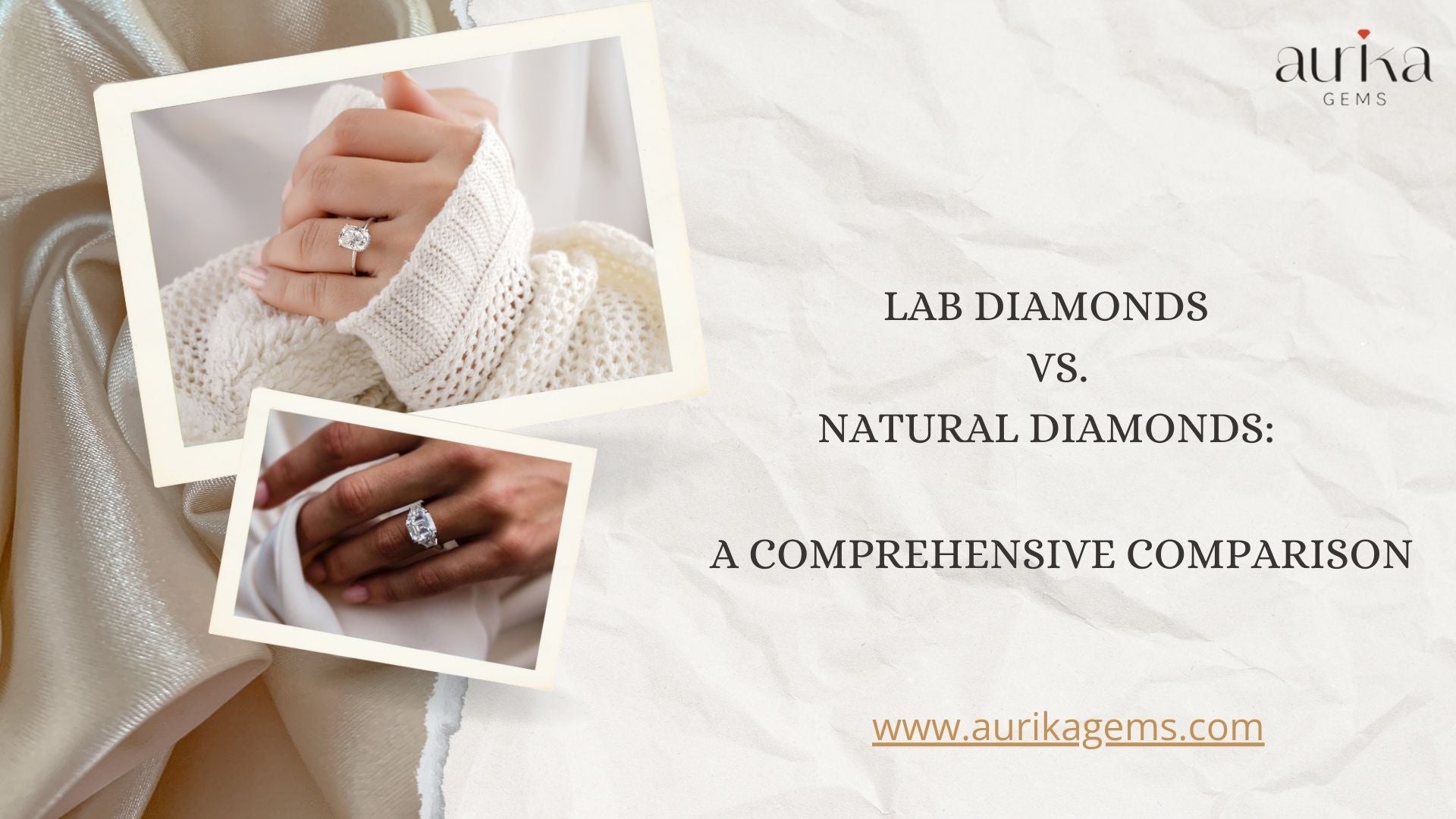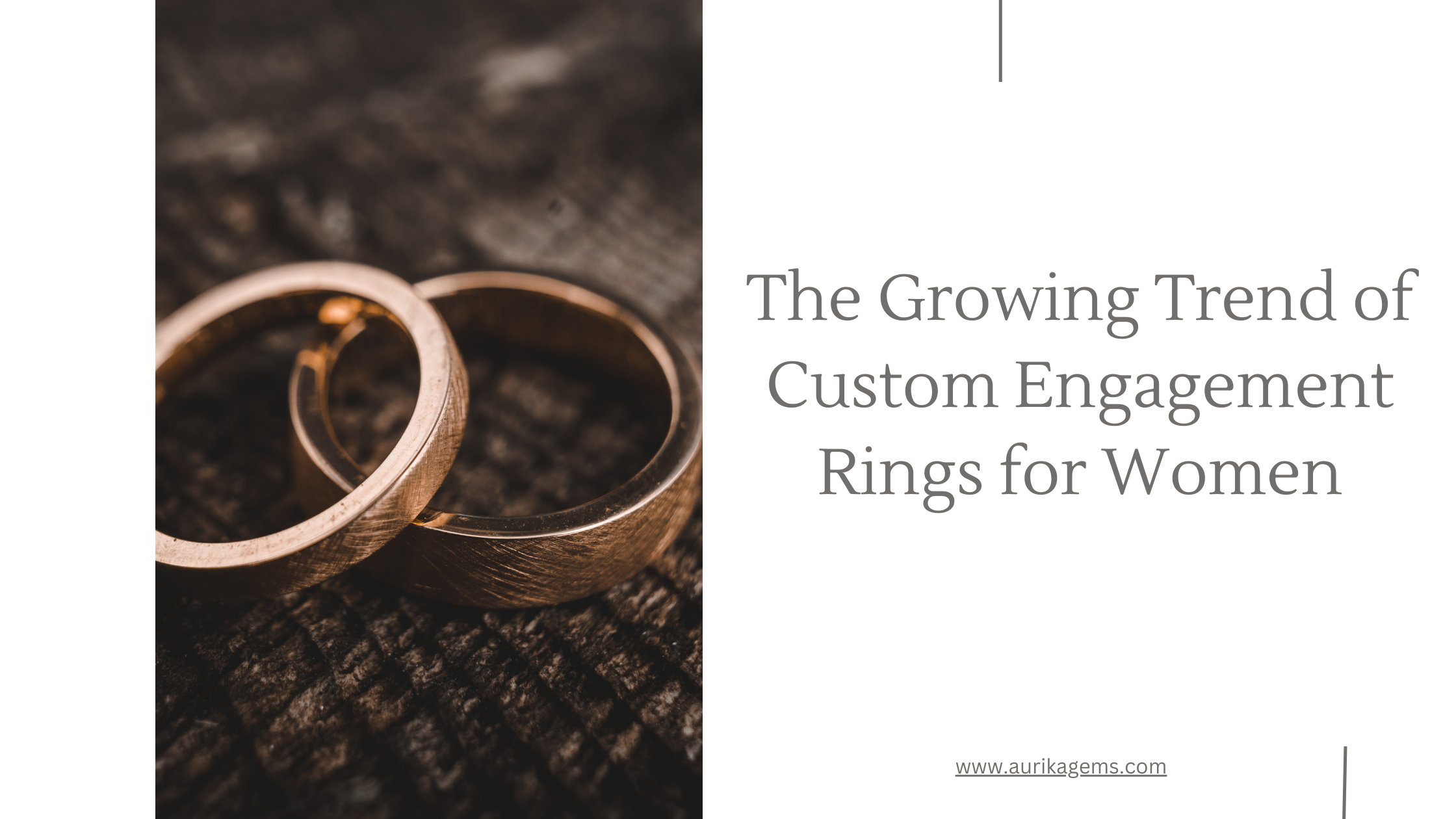
Lab Diamonds vs. Natural Diamonds: A Comprehensive Comparison
Diamonds have long been considered a symbol of luxury and enduring love. Traditionally, the allure of a diamond came from its rarity and the natural process of its formation. However, advancements in technology have introduced lab-grown diamonds, offering an alternative to natural diamonds. In this blog, we will delve into the key differences between lab diamonds and natural diamonds, exploring aspects such as origin, quality, cost, environmental impact, and market perception. By the end of this guide, you’ll be well-equipped to make an informed decision on which type of diamond best suits your needs.
What Are Lab Diamonds?
Lab diamonds, also known as synthetic or cultured diamonds, are created in controlled laboratory environments using advanced technological processes that replicate the natural conditions under which diamonds form. There are two primary methods for creating lab diamonds:
- High Pressure High Temperature (HPHT): This method simulates the high-pressure, high-temperature conditions of the Earth's mantle where natural diamonds form. Carbon is subjected to these conditions, resulting in the creation of diamonds that are chemically and physically identical to natural diamonds.
- Chemical Vapor Deposition (CVD): CVD involves placing a diamond seed in a chamber filled with carbon-rich gases. The gases are ionized, causing carbon atoms to deposit onto the seed, gradually forming a diamond. This method also produces diamonds that are indistinguishable from natural ones.
Read More:
How Are Lab-Grown Diamonds Made?
Lab-grown diamonds are created using two primary methods:
1. High Pressure High Temperature (HPHT)
This method simulates the high-pressure, high-temperature conditions of the Earth's mantle where natural diamonds form. Carbon is subjected to these extreme conditions, resulting in the formation of diamonds that are chemically and physically identical to natural diamonds.
2. Chemical Vapor Deposition (CVD)
In this method, a diamond seed is placed in a chamber filled with carbon-rich gases. The gases are ionized, causing carbon atoms to deposit onto the seed, forming a diamond. CVD diamonds are also indistinguishable from natural diamonds in terms of their physical and chemical properties.
Read More:
Are Lab Diamonds Real?
Yes, lab-grown diamonds are real diamonds. They have the same chemical composition, physical properties, and brilliance as natural diamonds. The term "real" refers to their authenticity as diamonds, regardless of their origin.

What Are Natural Diamonds?
Natural diamonds, often referred to as natural diamonds, are formed over millions of years deep within the Earth's mantle under extreme pressure and temperature. These natural diamonds are brought to the surface through volcanic eruptions and mined from the earth. Each natural diamond has a unique history and is a product of geological processes that span eons.
Key Differences Between Lab Diamonds and Natural Diamonds
1. Origin and Formation
Lab Diamonds:
- Created in weeks to months using advanced technology.
- Can be produced in a controlled environment, ensuring consistency in quality and size.
Natural Diamonds:
- Formed naturally over millions of years through geological processes.
- Each diamond is unique, with natural inclusions and imperfections that provide character.
2. Chemical and Physical Properties
Both lab diamonds and natural diamonds share the same physical and chemical properties:
- Chemical Composition: Both are composed of pure carbon atoms arranged in a crystal lattice structure.
- Hardness: Both types of diamonds are equally hard, scoring a 10 on the Mohs scale of hardness.
- Brilliance: Both exhibit exceptional brilliance and fire due to their ability to refract light.
3. Quality and Purity
Lab Diamonds:
- Can be produced with fewer inclusions or imperfections compared to natural diamonds.
- Lab diamonds often undergo rigorous quality checks to ensure they meet high standards.
Natural Diamonds:
- Natural diamonds may have inclusions or imperfections, known as "blemishes" or "inclusions," which can affect their clarity and value.
- The presence of natural inclusions adds to their uniqueness and can be used to identify them.
4. Cost
Lab Diamonds:
- Generally cost 20-40% less than natural diamonds of comparable size and quality.
- The lower cost is attributed to the efficiency of production and the absence of mining expenses.
Natural Diamonds:
- Typically command higher prices due to their rarity and the costs associated with mining, cutting, and distribution.
- Prices can vary significantly based on the diamond's size, color, clarity, and cut.
5. Environmental and Ethical Impact
Lab Diamonds:
- Considered more environmentally friendly as they do not involve mining, which can lead to habitat destruction and soil erosion.
- Often viewed as a more ethical choice, as they eliminate concerns related to "blood diamonds" or conflict diamonds.
Natural Diamonds:
- Traditional diamond mining can have significant environmental impacts, including ecosystem disruption and pollution.
- Ethical concerns exist around conflict diamonds, which are mined in war zones and sold to finance armed conflict.
6. Market Perception
Lab Diamonds:
- Perception has evolved, with many buyers accepting lab diamonds as a legitimate alternative to natural diamonds.
- Still, some consumers may prefer natural diamonds due to their historical value and rarity.
Natural Diamonds:
- Held in high esteem for their natural origin and historical significance.
- Considered a traditional choice for engagement rings and luxury jewelry.
7. Resale Value
Lab Diamonds:
- Generally have a lower resale value compared to natural diamonds.
- As the market for lab diamonds grows, their resale value may improve, but it remains lower than that of natural diamonds.
Natural Diamonds:
- Tend to hold their value better and may even appreciate over time.
- The resale value is influenced by the diamond’s quality, market demand, and rarity.

Choosing Between Lab Diamonds and Natural Diamonds
When deciding between lab diamonds and natural diamonds, consider the following factors:
- Budget: If cost is a major consideration, lab diamonds offer a more affordable option without compromising on quality or appearance.
- Ethics: If ethical and environmental concerns are important to you, lab diamonds provide a more sustainable and conflict-free choice.
- Sentiment: For those who value tradition and the natural history of diamonds, natural diamonds offer a unique and timeless appeal.
- Investment: If you're purchasing a diamond as an investment, natural diamonds may offer better long-term value and resale potential.
Lab-Grown Diamonds vs. Moissanites vs. Cubic Zirconia
1. Lab-Grown Diamonds
- Composition: Pure carbon arranged in a crystal lattice.
- Appearance: Identical to natural diamonds in brilliance and fire.
- Durability: Extremely hard, scoring 10 on the Mohs scale.
2. Moissanites
- Composition: Silicon carbide.
- Appearance: Brilliant but slightly different in fire and scintillation compared to diamonds.
- Durability: Hard but slightly less durable than diamonds, scoring 9.25 on the Mohs scale.
3. Cubic Zirconia
- Composition: Synthetic zirconium dioxide.
- Appearance: Can mimic diamonds but lacks the same brilliance and fire.
- Durability: Much softer than diamonds, scoring 8-8.5 on the Mohs scale.
FAQs
Are Lab-Grown Diamonds Good?
Lab-grown diamonds offer several benefits, including lower cost, ethical sourcing, and environmental sustainability. They are a high-quality alternative to natural diamonds, providing the same aesthetic appeal and durability at a more affordable price.
GIA Certified Lab-Created Diamonds
GIA certification ensures that lab-created diamonds have been graded according to the same rigorous standards as natural diamonds. A GIA certificate provides an unbiased assessment of the diamond’s quality, including its cut, color, clarity, and carat weight.
Should I Get a Lab-Grown Diamond Engagement Ring?
Choosing a lab-grown diamond for an engagement ring can be a great option if you value cost savings, ethical sourcing, and environmental sustainability. Lab-grown diamonds offer the same beauty and durability as natural diamonds, making them a worthy choice for an engagement ring.
Are Lab-Created Diamonds Sustainable?
Yes, lab-created diamonds are generally considered more sustainable than natural diamonds. They are produced with less environmental impact and avoid the ethical issues associated with traditional diamond mining. This makes them a preferred choice for environmentally conscious consumers.
Should I Choose a Lab-Grown or Natural Diamond Ring?
The decision between a lab-grown and natural diamond ring depends on your personal preferences and values. If you prioritize cost savings, ethical considerations, and environmental impact, lab-grown diamonds may be the right choice for you. If you value tradition, rarity, and the natural history of diamonds, a natural diamond might be more appealing.
Conclusion
Lab diamonds and natural diamonds each have their own unique attributes and advantages. Lab diamonds provide a cost-effective, ethical, and environmentally friendly alternative to natural diamonds, while natural diamonds offer timeless beauty and traditional value. Ultimately, the choice between lab diamonds and natural diamonds depends on your personal preferences, values, and budget.
As the diamond industry continues to evolve, both lab-grown and natural diamonds will play significant roles in the market. By understanding the differences and similarities between these two types of diamonds, you can make a well-informed decision that aligns with your values and desires.


